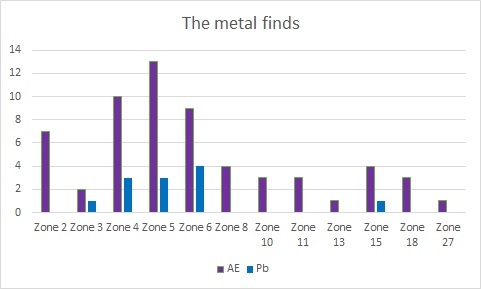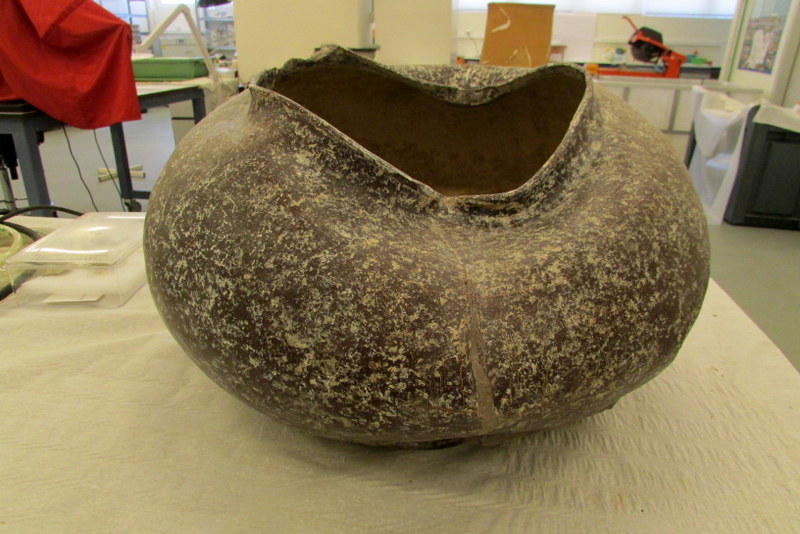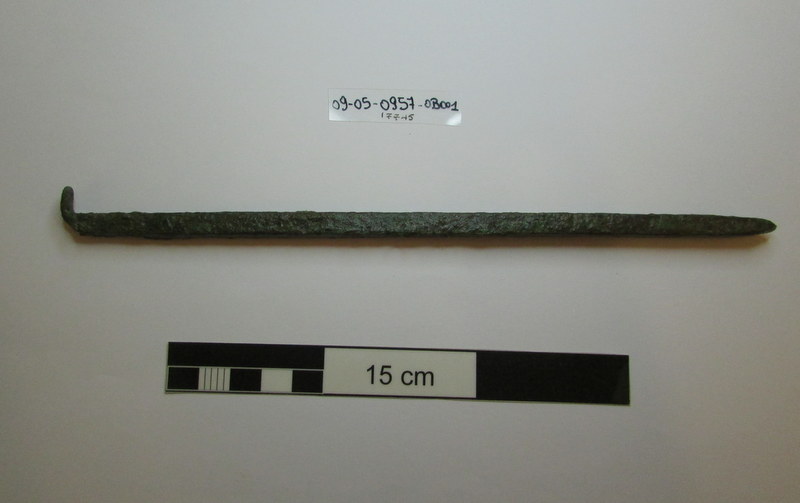The first 10 campaigns at Sissi have yielded an assemblage of c. 70 metal objects, mainly copper-based and lead. They have been found throughout the settlement and their quantitative distribution according to excavation zone can be seen in figure 1.
The state of preservation of this interesting collection ranges from the fragmentary and unidentifiable to the almost intact and impressive. The majority of the objects seem to have served diverse functional purposes, and therefore it is not surprising that the predominant class among them is tools. The design of each tool is specific aiming at performing a variety of different tasks, from precise and small scale actions to operations of larger scale.
The assemblage is in general characterised by variability and individuality, and even though most of the objects belong to the LM repertoire, some others are indeed singular. A few worth-mentioning examples would be a large globular lead vase weighing a little over 9 kilograms from Building E, space 5.8 (fig. 2) and a copper-based ‘rat-tail’ drill from Building E, space 5.4 (fig. 3). In addition to the metal objects, a limited amount of refractory material has been recognised, which, together with 2 small copper ingot fragments, indicate that some metalworking activities were taking place in or near the settlement.
The majority of the copper-based and lead objects have been analysed using pXRF in order to determine their main alloying elements by Dr. Y. Bassiakos and Dr. E. Filippaki (National Centre for Scientific Research ‘Demokritos’). A future analytical plan includes Lead Isotope Analysis with the intension to determine the origin of the copper and lead used at Sissi.


